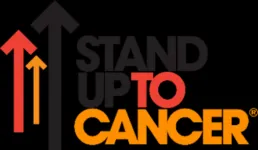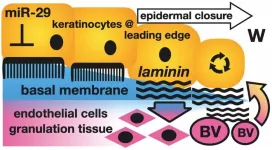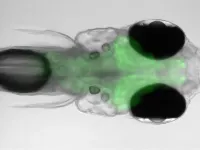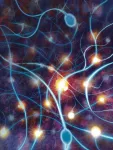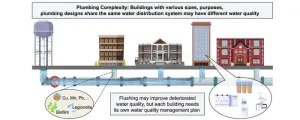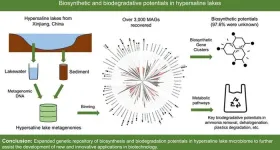(Press-News.org) A study published in Science on Feb. 1 reported a comprehensive database of single-neuron projectomes consisting of over 10,000 mouse hippocampal neurons, thus revealing the spatial connectivity patterns of mouse hippocampal neurons at the mesoscopic level.
The study was conducted by teams from the Center for Excellence in Brain Science and Intelligence Technology (CEBSIT), the Institute of Neuroscience of the Chinese Academy of Sciences (CAS), the HUST-Suzhou Institute for Brainsmatics, Hainan University, the Kunming Institute of Zoology of CAS, Lingang Laboratory, and the Shanghai Center for Brain Science and Brain-Inspired Technology.
The hippocampus serves as an essential brain region for learning and memory as well as various brain functions such as spatial cognition and emotional processing. It is one of the most extensively studied brain regions. Hippocampal neurons project widely to the brain-wide targets; thus, it is critical to investigate the projection patterns of hippocampal neurons at the single-neuron level.
This study reconstructed the whole-brain axonal morphology of over 10,000 neurons in the mouse hippocampus at a single-cell resolution with the neuronal cell bodies covering all subregions and multiple locations along different hippocampal axes, making this the most extensive single-neuron projectome database in the world.
This study took an innovative approach to categorize axonal trajectories with machine learning algorithms, thus allowing for a more efficient analysis of the morphological similarities among 341 projection patterns for mouse hippocampal neurons and ultimately identifying 43 distinct projectome cell types. It also incorporated the spatial transcriptome of mouse CA1 areas.
Based on these analyses, the study was able to elucidate the axonal projection pathways of hippocampal neurons along the anterior-posterior axis and reveal new projection patterns of hippocampal neurons. It also outlined the correspondence between hippocampal neuron soma locations and projection targets, and revealed basic organization principles of bilateral projections. Furthermore, correlation analysis of projectome cell types and spatial transcriptome data identified spatial correspondence between various genes and projectome subtypes, providing potential molecular and circuit targets for hippocampal functions.
Taken together, this study provides a structural basis for future studies of hippocampal functions and deciphers the potential correspondences between their soma locations, gene expression, and circuitry functions.
The database for the hippocampal single-neuron projectomes, along with the database on the hippocampal longitudinal axis and spatial transcriptomes, are now publicly accessible through the Digital Brain CEBSIT portal (https://mouse.digital-brain.cn/hipp). To facilitate broader usage of the databases, a team from the Computing and Data Center of CEBSIT has developed a website to integrate data visualization, user interface, online analysis, and data downloads.
END
Whole-brain projection patterns of single neurons in mouse hippocampus unveiled
2024-02-01
ELSE PRESS RELEASES FROM THIS DATE:
New study suggests culling animals who ‘don’t belong’ can be a flawed nature conservation practice
2024-02-01
New research published today in the journal Science has concluded that eradicating animals on the basis that they are not native in order to protect plant species, can be a flawed practice costing millions of dollars, and resulting in the slaughter of millions of healthy wild animals.
Introduced large herbivores, or megafauna, are claimed to have distinct and harmful ecological impacts, including damaging sensitive plants and habitats, reducing native plant diversity, and facilitating introduced plants. However, up to now these impacts have been studied without comparison to a proper ...
IU surgeon-scientist studying physiological effect of microorganisms in sinuses of chronic rhinosinusitis patients
2024-02-01
INDIANAPOLIS—An Indiana University School of Medicine surgeon-scientist is leading a multi-institutional grant investigating the role of the sinus microbiome in chronic rhinosinusitis, an inflammatory disease that causes the lining of the sinuses to swell. The research team will study biospecimens from human sinus surgery patients in the lab and examine how bacteria in the microbiome shape the disease process and might offer novel therapeutic strategies.
Vijay Ramakrishnan, MD, professor of otolaryngology—head ...
Stand Up to Cancer announces changes to scientific advisory committee
2024-02-01
LOS ANGELES – February 1, 2024 – Stand Up To Cancer® (SU2C) today announced changes to its Scientific Advisory Committee (SAC), which oversees SU2C’s scientific research.
Composed of cancer research leaders from academic, government, industry, and advocacy fields, SU2C’s SAC sets direction for research initiatives, reviews proposals for new grant awards, and conducts rigorous oversight of all active grants in the SU2C research portfolio in collaboration with SU2C’s president and CEO Julian Adams, Ph.D.
World renowned cancer researcher and Nobel laureate Phillip A. Sharp, Ph.D., who has chaired the SAC since SU2C launched in ...
Small RNAs take on the big task of helping skin wounds heal better and faster with minimal scarring
2024-02-01
Philadelphia, February 1, 2024 – New findings in The American Journal of Pathology, published by Elsevier, report that a class of small RNAs (microRNAs), microRNA-29, can restore normal skin structure rather than producing a wound closure by a connective tissue (scar). Any improvement of normal skin repair would benefit many patients affected by large-area or deep wounds prone to dysfunctional scarring.
Because the burden of non-healing wounds is so significant, it is sometimes called a “silent pandemic.” Worldwide, costs associated with wound care are expected to ...
Rural placements for medical students feed ‘pipeline’ for new family docs
2024-02-01
EDMONTON — New research shows an innovative education program is helping to address Alberta’s rural doctor shortage by making it more likely medical students will set up a rural family practice after graduation.
The University of Alberta was one of the first medical schools in Canada to set up its Rural Integrated Community Clerkship program back in 2007. It sends up to 25 third-year students for 10-month intensive work experiences with a single or small number of teaching physicians.
Instead of rotating to a new specialty placement every four to six weeks as in an urban ...
Zebrafish navigate to find their comfortable temperature
2024-02-01
All animals need to regulate their body temperature and cannot survive for long if it gets too high or too low. Warm-blooded organisms like humans have various ways to do this. They release heat by sweating or expanding the blood vessels in their skin, while shivering or burning fat in their brown adipose tissue has the opposite effect.
Cold-blooded animals such as the zebrafish, by contrast, cannot do any of these, so they have a different strategy. They look for places nearby that are at their “comfortable temperature,” just like how we might go out into the sun when we feel chilly or seek out some shade once it gets too ...
Buck scientists discover a potential way to repair synapses damaged in Alzheimer’s disease
2024-02-01
While newly approved drugs for Alzheimer’s show some promise for slowing the memory-robbing disease, the current treatments fall far short of being effective at regaining memory. What is needed are more treatment options targeted to restore memory, said Buck Assistant Professor Tara Tracy, PhD, the senior author of a study that proposes an alternate strategy for reversing the memory problems that accompany Alzheimer’s disease and related dementias.
Since most current research on potential treatments for Alzheimer’s focuses on reducing the toxic proteins, such as tau and amyloid beta, that accumulate in ...
Researchers identify critical pathway responsible for melanoma drug resistance
2024-02-01
(Boston)—One of the major challenges in cancer research and clinical care is understanding the molecular basis for therapeutic resistance as a major cause of long term treatment failures. In cases of melanoma, the main targeted therapeutic strategy is directed against the mitogen-activated protein kinase (MAPK) pathway. Unfortunately, in the vast majority of these patients, resistance to MAPK inhibitor therapies develops within one year of treatment.
In a new study from Boston University Chobanian & Avedisian School of Medicine, ...
Pandemic lockdowns and water quality: a revealing study on building usage
2024-02-01
During the COVID-19 pandemic, lower occupancy in buildings led to reduced water use, raising concerns about water quality due to stagnation. Government warnings highlighted increased risks of chemical and microbiological contamination in water systems. Studies showed that reduced usage and stagnation could elevate heavy metal levels and decrease disinfectant effectiveness, affecting microbial growth. To address this, regular fixture flushing was recommended, which temporarily improved water quality but also revealed the complexities of managing building water systems effectively.
In a recent study (https://doi.org/10.1016/j.ese.2023.100314) ...
Exploring the unseen: microbial wonders in earth's saltiest waters
2024-02-01
The study delves into hypersaline lakes in Xinjiang, China, exploring the genetic and metabolic diversity of microbial communities termed "microbial dark matters". Hypersaline lake ecosystems, characterized by extreme salinity, harbor unique microorganisms with largely unexplored biosynthesis and biodegradation capabilities. The research seeks to uncover novel biological compounds and pathways, potentially revolutionizing biotechnology, medicine, and environmental remediation by tapping into the untapped potential of these extremophiles.
A recent study (https://doi.org/10.1016/j.ese.2023.100359) published ...

